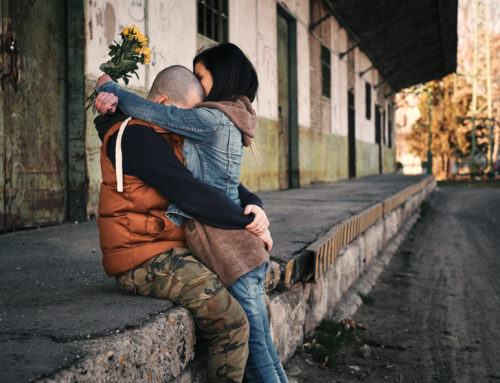“The weak can never forgive. Forgiveness is the attribute of the strong.” – Mahatma Gandhi
To forgive is one of the hardest things we do. The process can be so misunderstood, and yet it is so necessary.
Why should I be forgiving when the other person is the one who has inflicted pain on me?
An excellent question! But first, let’s look at what it is and what forgiveness means.
Webster’s says:
To give up resentment
Stop being angry with
Pardon
Give up all claim to punish
Overlook
Cancel a debt
Another way to look at forgiveness is to see it as a step toward re-establishing an intimate relationship!! The Greek word for forgiveness, Luo, means to “untie the knot!” Exactly what couples need to do when their conflict turns to negativity and escalation. Many times forgiveness and reconciliation go together, “to reconcile” means literally, “to exchange, or to bring into a changed relationship.”
However, forgiveness and reconciliation don’t always go together. Anne Bercht says, “to truly forgive we must be aware of an important distinction: Forgiveness is not reconciliation with the person. Reconciliation is different. Forgiveness is one person’s moral response to another person’s injustice.”
What Forgiveness is not!
Forgiveness is not condoning the wrong or hurtful act. We do not approve, excuse, or justify what has happened. It is not denying it happened or pretending it never happened, nor just forgetting about it. “Forgive and forget” is not a reality. We may not let it affect us or control us anymore, but we don’t just forget. It also does not mean the pain has gone away. We don’t have to pretend we are not hurt or that we are not taking the offense seriously.
Why Forgive?
“If we really want to love, we must learn how to forgive.” – Mother Theresa
Our pain, rejection, and hurt will only begin to heal when we begin to forgive.
Peace of mind and forgiveness go together!
We do it for ourselves, not necessarily the other person.
It frees us to live a fulfilled, unrestricted life!
More reasons to Forgive-
Unforgiveness leads to emotions of anger, resentment, bitterness, hatred, fear, and hostility.
Not forgiving hurts only me. (And who wants to live like that!?)
It puts us in the position to choose to control our thoughts, feelings, and behaviors.
“Not forgiving someone is like taking poison ourselves (continuing to suffer for what they did or did not do to you) and expecting them to die!” – Larry James
In Forgiving the Devil, by Terry Hargrave, he says that pain comes from a violation of love and trust, and that forgiveness is about reestablishing that love and trust in a relationship. He describes two essential elements of forgiveness:
Salvage
To keep damage from past hurts to a minimum, you can use salvage.
Salvage means understanding the circumstances of the abused, and abuser so that one does not carry the burden of pain alone. It can also help us to learn how to make future relationships more loving and trustworthy. Salvage does not restore love and trust to a damaged relationship but helps us to recognize the interactions that were causing damage and prevent them from happening again.
Restoration
Restoration is different than salvage. It requires the person who has been wronged to put themselves in a position where love and trust can be rebuilt. Restoration is more closely related to reconciliation. The relationship can be reconciled and restored.
Forgiveness can certainly be a difficult thing to do. Many times feelings play a huge part in how we go about forgiving, or if we even believe we can forgive. But forgiveness is very much like love; it has many feelings surrounding it, but it is a choice! The first step is that you must decide to forgive, and then move your emotions toward that forgiveness.
Stages of forgiveness:
Decisional Forgiveness is where a person chooses to forgive. Forgiveness involves declaring that we are not going to seek revenge or avoid the other person, but will do our best to get along in the future.
Emotional Forgiveness means we move positive emotions toward the offender, such as empathy, sympathy, compassion, love, etc. It involves a change of heart in which we replace negative feelings of resentment, bitterness, hostility, anger, hatred, and fear with more positive emotions toward the person.
Practical Steps to Forgiveness
Try writing down the person’s name that has hurt you; then describe the experience, the pain, and emotions you have gone through or are currently experiencing.
Sometimes revealing the extent of the hurt and emotional feelings to the person who has offended you and verbalizing aloud that you forgive them can have a healing effect.
Remove barriers in your thoughts and emotions.
Deal with your emotions.
Try to trust again.
Don’t let shame, guilt, or fear get in the way.
Stop denying or minimizing pain, but accept it and commit to dealing with it.
Keep Stepping!!!
Remember the goal (usually) is for the restoration of the relationship.
Try to empathize with the other.
Reflect on your capability to inflict hurt; we all make mistakes and hurt others.
Recall times when you forgive.
Take responsibility for your contributions to the problems in the relationship
Taking steps to forgive can be hard, emotional, and painful. But the value to YOU is relief, possible reconciliation with a loved one, peace, and living a life free of resentment and bitterness. Let me challenge you, in the next 30 days – Forgive Someone. Let me know how these practical steps above work for your forgiveness process.
WANT TO GO DEEPER: The best first step is understanding how our Brain/Heart Connection works. Join us in this free mini-workshop to discover your unique, God-built construction and how you can make the most of your Brain/Heart Connection so you can utilize this to deepen your connection and create a fulfilling relationship with that special someone. Get It NOW!




